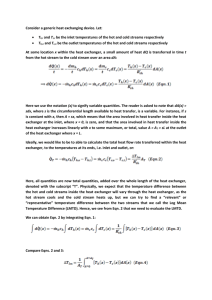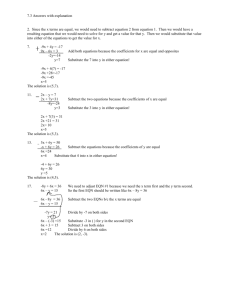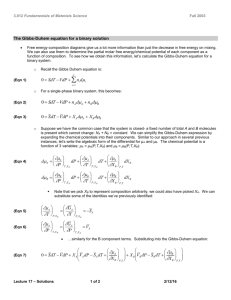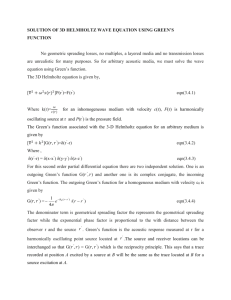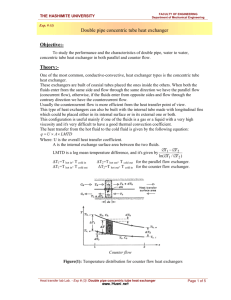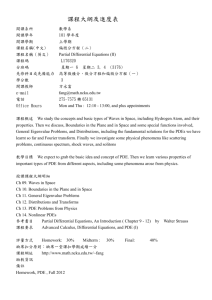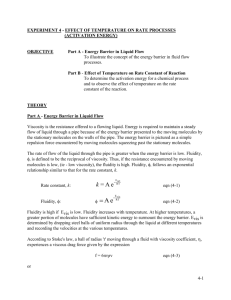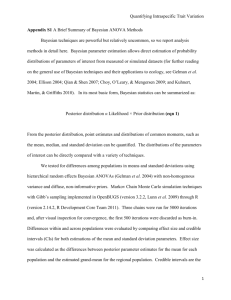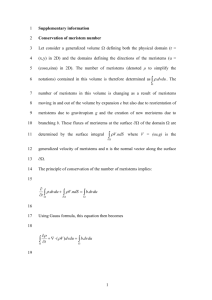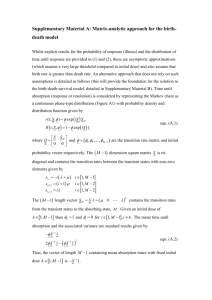Derivation of Log Mean Temperature Difference (Heat Exchanger
advertisement
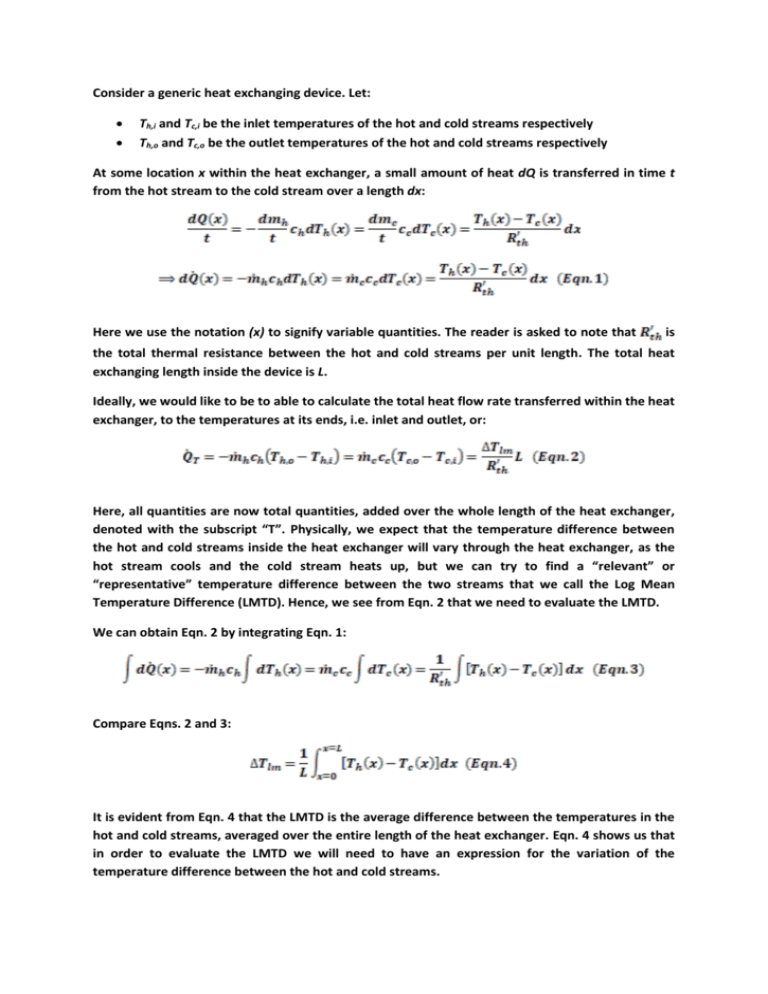
Consider a generic heat exchanging device. Let: Th,i and Tc,i be the inlet temperatures of the hot and cold streams respectively Th,o and Tc,o be the outlet temperatures of the hot and cold streams respectively At some location x within the heat exchanger, a small amount of heat dQ is transferred in time t from the hot stream to the cold stream over a length dx: Here we use the notation (x) to signify variable quantities. The reader is asked to note that is the total thermal resistance between the hot and cold streams per unit length. The total heat exchanging length inside the device is L. Ideally, we would like to be to able to calculate the total heat flow rate transferred within the heat exchanger, to the temperatures at its ends, i.e. inlet and outlet, or: Here, all quantities are now total quantities, added over the whole length of the heat exchanger, denoted with the subscript “T”. Physically, we expect that the temperature difference between the hot and cold streams inside the heat exchanger will vary through the heat exchanger, as the hot stream cools and the cold stream heats up, but we can try to find a “relevant” or “representative” temperature difference between the two streams that we call the Log Mean Temperature Difference (LMTD). Hence, we see from Eqn. 2 that we need to evaluate the LMTD. We can obtain Eqn. 2 by integrating Eqn. 1: Compare Eqns. 2 and 3: It is evident from Eqn. 4 that the LMTD is the average difference between the temperatures in the hot and cold streams, averaged over the entire length of the heat exchanger. Eqn. 4 shows us that in order to evaluate the LMTD we will need to have an expression for the variation of the temperature difference between the hot and cold streams. From Eqn. 1: Adding Eqns. 5 and 6: Hence, from Eqn. 8, the difference between the hot and cold streams decreases exponentially as we move along x inside the heat exchanger from the inlet at x = 0 to the outlet at x = L. We can now remove the constant of integration, a. We can apply two boundary conditions, one at the inlet and one at the outlet where the temperatures are known. For convenience we use Eqn. 7 that is otherwise equivalent to Eqn. 8: Substituting the results in Eqns. 8, 9 and 11 into Eqn. 4: Finally, we can write an expression for the varying temperature difference between the hot and cold streams inside the heat exchanger, but substituting the results in Eqns. 9 and 11 into Eqn. 8: This is the most generic analysis, and includes situations in which the temperature of one of the two streams does not change.
